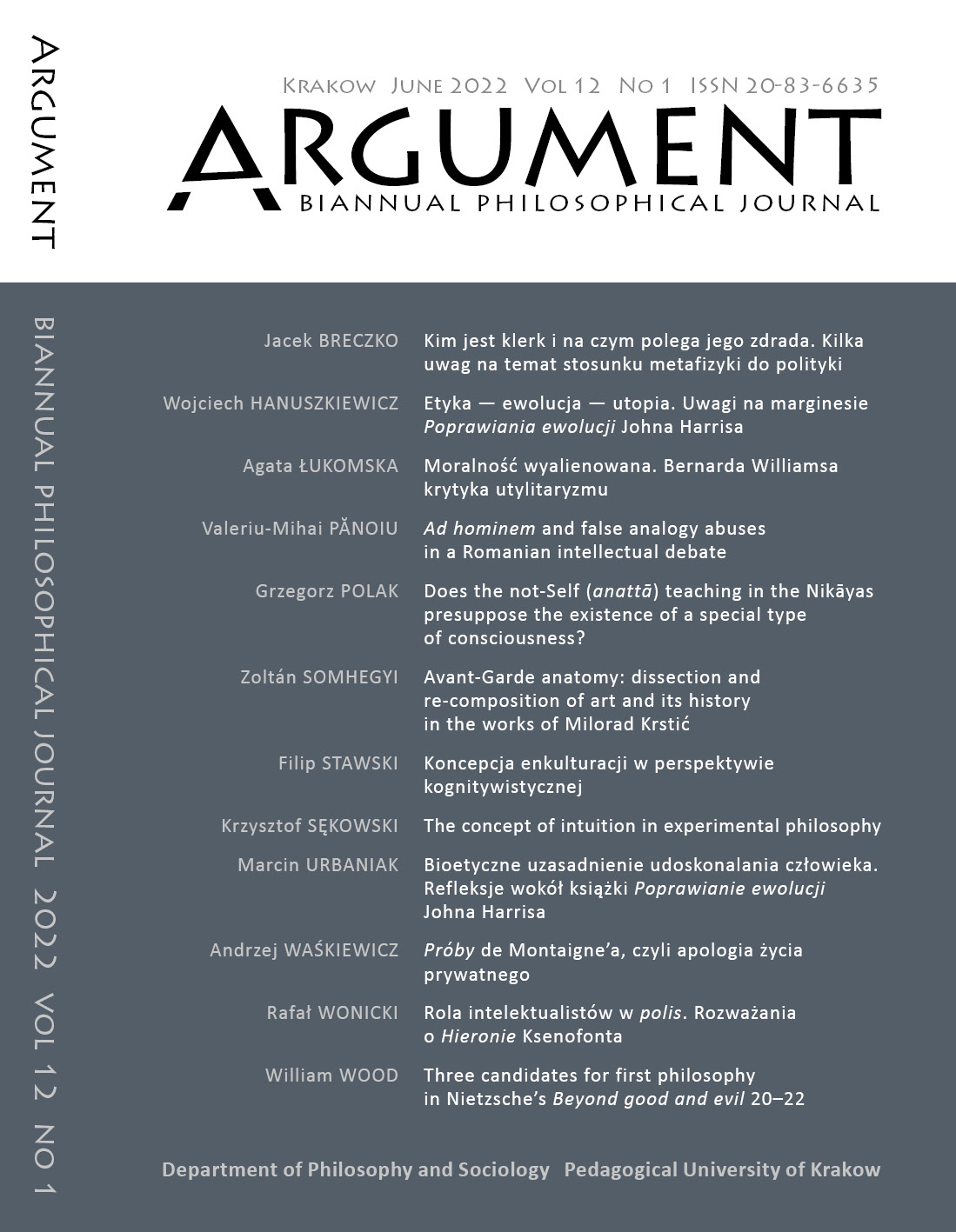Avant-Garde anatomy: dissection and re-composition of art and its history in the works of Milorad Krstić
Słowa kluczowe:
re-visitations of the past; Avant-Garde; Milorad Krstić; Das Anatomische Theater; Ruben Brandt, collectorAbstrakt
Numerous artists have revisited or got inspired by artworks of earlier periods, thus making their own paraphrase of previous creations. Not only artists of the (early) Modern Age had revisited Antiquity, but even Avant-Garde artists have not entirely dissociated themselves from certain forms, motifs, approaches or themes of the classical traditions. It is so, despite the Avant-Garde artists’ focus on creating along new visions, and offering radically novel perspectives in and for art and its infrastructure, that was a similar feature in most of the movements within the classical Avant-Garde. Later however, even Avant-Garde itself got historicised, and, as a consequence, became possible subject-matter of revaluation, as we can observe it in the paraphrasing practice of several artists from the 20th and 21st centuries. The works of Milorad Krstić — that are put in the centre of this study as a thought-provoking case study with fascinating consequences for aesthetics too — represent a particular approach within the aforementioned revisitations of art in general and the re-interpretation of Avant-Garde and 20th century art in particular. One of the specialities of his approach lies in the fact that he does not merely return to previous works, including those that are of crucial importance in the Avant-Garde, simply for inspiration, but his practice of the evaluative examination of the art of the 20th century will be essentially defined by the Avant-Garde techniques. In his Das Anatomische Theater he dissects the 20th century, but then encyclopaedically re-assembles the fragments to a novel total work of art that presents the history of art of the period. Then, in his full-length animation movie Ruben Brandt, collector he continues re-assembling and re-telling art history by constantly inserting fragments of it in the novel work itself, hence the collection will become not only the subject-matter of the film, but even one of its most spectacular features.


